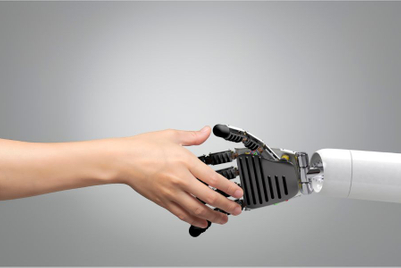.jpg&h=570&w=855&q=100&v=20250320&c=1)
The American author known for his adventurous storytelling, Jack London (real name: John Griffith Chaney), was enamoured with photography, but he gave his portrait photographer friend, Arnold Genthe, a hard time.
"Show me your camera. You must have a great camera. Show me how you use it," he would say to him. One day, an irritated Genthe snapped back at him, “Jack, you are a great writer. You must have a wonderful typewriter.’
This playful banter may offer a lesson for us today, especially in the context of AI’s advent—but with a few caveats.
It is possible that Jack London’s typewriter, infused with AI, could craft an essay that imitated his own writing style. This might have been distressing to Jack London if he was still around. But how could it improve on his work? Could Genthe’s camera have benefited from AI? Perhaps. But with the same conundrum in play.
The strength of human societies has always come from their ability to create and sustain networks of information. These, in turn, allow large-scale collaboration and the creation of new ideas, art, and entertainment. More than modes of transport, communication, and language, that strength includes intangible networks of shared beliefs, cultural narratives and laws.
We have long tried to differentiate between individual art like writing or painting, and collaborative art like filmmaking, or, for that matter, advertising—without realising that it’s all collaborative. The copywriter in the backroom is unconsciously channelling thoughts and emotions learnt and understood from her/his past as a writer.
A tool with agency
Technology has always played a great role in creativity. The Gutenberg press didn’t make much of an impact till people started writing novels. AI too is a tool. But it is a tool with agency. It is an inorganic life form that can take sentient form.
AI does not need to generate feelings in itself. It only needs to generate feelings in us. And that is where predictive AI excels. It can gauge our wants and needs and recommend products and services to us. But we have to give it enough data first. And it is not the individual who will give enough data to AI. It requires colossal amounts of varied data to process before it can do that—the data that humans must provide first.
This is technology that learns constantly. But it can only learn from the past and generate ideas based on what has come before. AI can create a new Rembrandt painting based on all of his paintings that it has seen before. It cannot create the future of art. For that we still need imagination and human agency.
On the technical side, AI is still at its best. It can gorge on data and spit out mathematical conclusions with alarming speed. But then, its inaccuracies can still be as subtle as a sledgehammer. Admittedly, humans are no better at this.
The Radio Corporation of America (RCA) rejected the Beatles in the early 1960s because the data showed that guitar music was a thing of the past and would never make it into the future. IBM’s research showed that there would probably be a worldwide market for just 5,000 personal computers when they launched the PC. John Hegarty was told that the tagline ‘Vorsprung Durch Technik’ would never work for Audi in an English ad. AI can just give you these predictions with chilling alacrity.
Advantage, humans!
Human oversight will still be paramount here for the reasons stated above. AI has no gut feeling. As Yuval Noah Harari tells us, language is part of the human operating system. Interoperability depends on understanding nuance and meaning at a human level. We have struggled with this in advertising all our lives. Does a joke work in a different language? In a different culture? On another continent? Would it offend, be unconvincing, or just plain incomprehensible? Can AI take up this challenge? I wonder.
The soul of advertising is to charm, entice and entertain. AI can only produce work that in humans, would be called derivative. But then here is the blessing that can dispel the curse.
AI may not be able to create the next big campaign or create imaginative new strategies. But it can answer our old, Jack London conundrum. Can the AI make him write like JD Salinger? Can it write a headline like David Abbot if he wrote like Neil French? Or design a logo like Milton Glaser took lessons from Picasso? What if Dan Weiden had launched the Apple Mac?
But then, AI would still require human ingenuity to tell it what to think. Can it learn to create like that? I wonder. AI is here and is willing to learn. Perhaps we in advertising and marketing, can learn from it too.

- Sujoy Mukherjee, senior creative director at Thought Blurb Communications.


.jpg&h=268&w=401&q=100&v=20250320&c=1)

.jpg&h=268&w=401&q=100&v=20250320&c=1)




.jpg&h=268&w=401&q=100&v=20250320&c=1)
